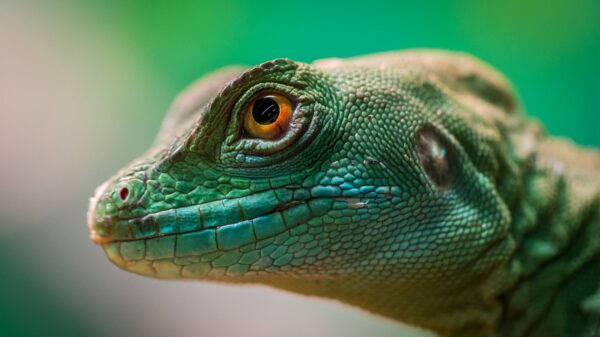As inhabitants of this planet, we have a responsibility to protect all forms of life that call it home. Unfortunately, many animals are currently facing the threat of extinction due to factors such as climate change and human activities. It is up to us to take action and make sure these endangered species do not disappear forever. In this blog post, we will explore ways in which we can protect these vulnerable creatures and why doing so gives us hope for the future. Join us on this journey towards creating a world where every living being thrives!
Introduction to Endangered Species
There are many reasons why species become endangered. Some are due to natural causes like changes in the environment, while others are caused by humans. Overhunting, habitat destruction, and pollution are just a few of the ways humans have contributed to species becoming endangered.
It is estimated that there are currently over 5,000 species of animals and plants that are considered endangered. This number continues to grow as more and more species become threatened with extinction. While it may seem like a daunting task to protect all of these species, there is hope.
Organizations like the World Wildlife Fund work tirelessly to protect endangered species and their habitats. Through education and conservation efforts, they are working to make a difference for these animals and plants. We can all do our part to help protect endangered species by becoming more aware of the issues and taking action to make a difference.
Causes of Endangered Species
Humans are the primary cause of endangered species. The effects of human activity on the environment are widespread and well documented. In addition to habitat loss, the main causes of species decline include:
– Illegal Wildlife Trade: The illegal wildlife trade is a multi-billion dollar industry that threatens the survival of many species. Wildlife products are smuggled across borders and sold on the black market. This trade is driven by consumer demand, and often involves endangered animals such as elephants, tigers, rhinos, and pangolins.
– Climate Change: Climate change is a major threat to biodiversity. Rising temperatures and extreme weather events can lead to habitat loss, ecosystem disruption, and increased competition for resources. Many plants and animals are already struggling to adapt to these changes, and many more will likely become extinct in the coming years if we don’t take action to mitigate climate change.
– Pollution: Pollution from chemicals, plastics, and other waste products is having a devastating effect on ecosystems around the world. This pollution can contaminate soil and water resources, making it difficult for plants and animals to survive. It can also cause genetic damage that leads to deformities or reproductive problems in future generations.
These are just some of the ways that humans are causing species decline. We have the power to reverse this trend by taking action to protect habitats and reduce our impact on the environment.
Current Policies and Initiatives Aimed at Protecting Endangered Species
There are a number of policies and initiatives currently in place aimed at protecting endangered species. The Endangered Species Act, passed in 1973, is perhaps the most well-known of these. The Act prohibits the “take” of listed species, as well as the interstate commerce in endangered animals and plants. The Act has been credited with saving many species from extinction, including the bald eagle and the American alligator.
Other federal initiatives aimed at protecting endangered species include the establishment of the National Wildlife Refuge System and the creation of national parks. These protected areas provide habitat for many threatened and endangered species. In addition, the U.S. Fish and Wildlife Service implements a variety of conservation programs designed to protect imperiled wildlife.
State governments also play an important role in safeguarding endangered species. Many states have enacted their own versions of the Endangered Species Act, and many have established their own protected areas for wildlife. In addition, state wildlife agencies often implement management programs aimed at conserving endangered species on state-owned lands.
Private citizens also have a role to play in protecting endangered species. Individuals can support conservation efforts by donating to organizations working to protect imperiled wildlife, by participating in citizen science projects, or by simply making an effort to learn more about the issue and spreading awareness to others.
What Can We Do to Help?
When it comes to protecting endangered species, we all have a responsibility to do our part. But what can we do to help?
There are many things we can do to help protect endangered species. We can start by educating ourselves and others about the issue. We can support organizations that are working to protect endangered species. And we can take action in our own communities to make a difference.
Here are some specific things you can do to help protect endangered species:
Learn about the issue: Read books, articles, and blog posts about endangered species and find out what is being done to protect them. You can also check out websites like the Endangered Species Coalition or Defenders of Wildlife for more information.
Support organizations that are helping: There are many organizations working to protect endangered species both in the U.S. and around the world. Consider supporting these organizations financially or with your time and skills.
Take action in your community: Get involved in local efforts to protect endangered species. This could include writing letters or petitions, attending rallies or protests, or meeting with elected officials. You can also raise awareness by talking to friends and family about the issue and sharing information on social media.
Understanding the Importance of Preserving Biodiversity
Biodiversity is essential to the health of our planet and its ecosystems. It helps to clean the air and water, provides food and shelter for wildlife, and helps to regulate the climate. Biodiversity also makes our world more beautiful and interesting.
Sadly, human activity is causing a rapid loss of biodiversity. We are destroying natural habitats, polluting the environment, and over-exploiting resources. This is having a devastating impact on many species of plants and animals, which are struggling to survive.
It is vital that we take action to protect endangered species and preserve biodiversity. This is our responsibility as stewards of the earth. It is also our hope for a better future. By working together, we can make a difference and ensure that our planet remains healthy and thriving for generations to come.
Examples of Successful Conservation Efforts
Throughout the world, countless organizations are working to protect endangered species. Here are a few examples of successful conservation efforts:
The African Wildlife Foundation works to protect Africa’s wildlife and habitats. They have helped create more than 60 protected areas, including national parks.
The World Wildlife Fund works to protect tigers, rhinos, elephants, and other threatened and endangered animals. They also work to conserve forests and oceans.
The Nature Conservancy is a global organization that works to protect land and water resources. They have helped protect more than 119 million acres of land and 5,000 miles of rivers worldwide.
These are just a few examples of the many organizations working hard to protect our planet’s endangered species. With continued support, we can make a difference for these animals and help ensure their survival for future generations.
Conclusion
It is our collective responsibility to protect endangered species on Earth. We must recognize the urgency of the situation, take immediate action and implement long-term solutions that will ensure a sustainable future for all living things. With increasing awareness about the importance of preserving biodiversity, we can be hopeful that more people around the world will get involved in protecting endangered species from extinction. By doing so, we can help ensure a better future for both humans and animals alike.










